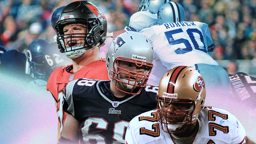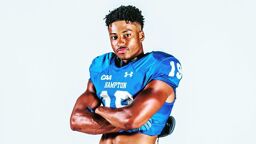As another new NFL season approaches, the country’s most popular sports league finds itself in an interesting place in my mind. The last time I wrote anything explicitly about the NFL focused on how my beloved San Francisco 49ers helped me feel like I had a place within the greater football world after decades of learned behaviors and perceived norms derived from my interactions with football told me that queer boys didn’t belong.
That piece came with its own select emotions, especially since it was published mere hours before the Kansas City Chiefs ripped my heart out in the waning minutes of the Super Bowl yet again. But the time between then and now, after the evening of mourning I give myself following bitter losses, has been interesting as it relates to how the NFL and football intersect with queerness.
The NFL’s growing commitment to LGBTQ advocacy and outreach under commissioner Roger Goodell has been wonderful to watch, even with the knowledge that the organization and its teams could definitely do more in the field. Carl Nassib and Kevin Maxen coming out as gay in recent years certainly upped the speedometer on the expansion of such initiatives, but the overall positive movement cannot be ignored.
But the NFL, like any corporate behemoth, has many people within its makeup; too many to always guarantee a united front on pretty much anything. This offseason, queerness seemed to be the splintering subject.
Get off the sidelines and into the game
Our weekly newsletter is packed with everything from locker room chatter to pressing LGBTQ sports issues.
Related


The NFL has never shown more love for queer fans and potentially out gay players
The NFL will likely have a small percentage of voices expressing hate, but more NFL players aren’t letting these voices dictate the league’s relationship with LGBTQ fans
By Brian C. Bell | September 5, 2024

This all-hot NFL fantasy football team will win your league and quicken your pulse
These NFL players are hot on and off the field and are must-picks in any fantasy football draft.
By Jim Buzinski | August 28, 2024
Harrison Butker’s homophobic and misogynist comments are the obvious example to point to, yet the reemergence of homophobia within the ranks of current and former NFL players has a wider field of view. Former Dallas Cowboys receiver Dez Bryant, whose mother is gay, recently reiterated his disdain for queer people in a homophobic and transphobic social media rant. New York Jets quarterback Aaron Rodgers (who has his own can of worms we don’t have time or space to get into right now) is being scrutinized again for how he handled rumors about his sexual orientation from a decade ago.
Add those incidents to the issues that popped up during the 2023-24 season, including former NFL receivers Cole Beasley and Antonio Brown sharing comments on men painting their nails dripping with casual homophobia, multiple players supporting anti-LGBTQ organizations, the New England Patriots linebacker Matthew Judon using AI images to toss a dash of homophobia Patrick Mahomes’ way, and you’d think homophobic sentiments were a side effect of wearing a football helmet.
The truth couldn’t be more different.
Yes, anything as large as the NFL and its fraternity of players, coaches and personnel means there will always be a small percentage of voices expressing hate. But more and more NFL players, especially the entering generation of stars, aren’t letting these voices dictate the league’s relationship with LGBTQ fans.
Chicago Bears quarterback Caleb Williams came to the defense of expanded gender expression via painting nails. New York Jets cornerback Sauce Gardner, albeit reductively, publicly defended a queer Twitch streamer who was experiencing online harassment. San Francisco tight end George Kittle has long been an LGBTQ ally. Former NFL receiver Kenny Stills did his best to educate Beasley about why his views were wrong.
Of course there are still battles to fight and discrepancies to highlight, especially when it came to how the NFL responded to Butker’s comments in particular, but on the whole, just as LGBTQ identities and culture are becoming more normalized and accepted as younger generations grow into adulthood, so is the population of NFL players.
Organizations like the 49ers, Buffalo Bills and New York Giants continue to put a similar foot forward in the organizations they support and partnerships they form.
That doesn’t mean the pressure for equity and the fight to limit and hopefully silence hateful rhetoric should let up, but it elates me to see more of football display just how much they aren’t here for it anymore. More people shouldn’t be.








































